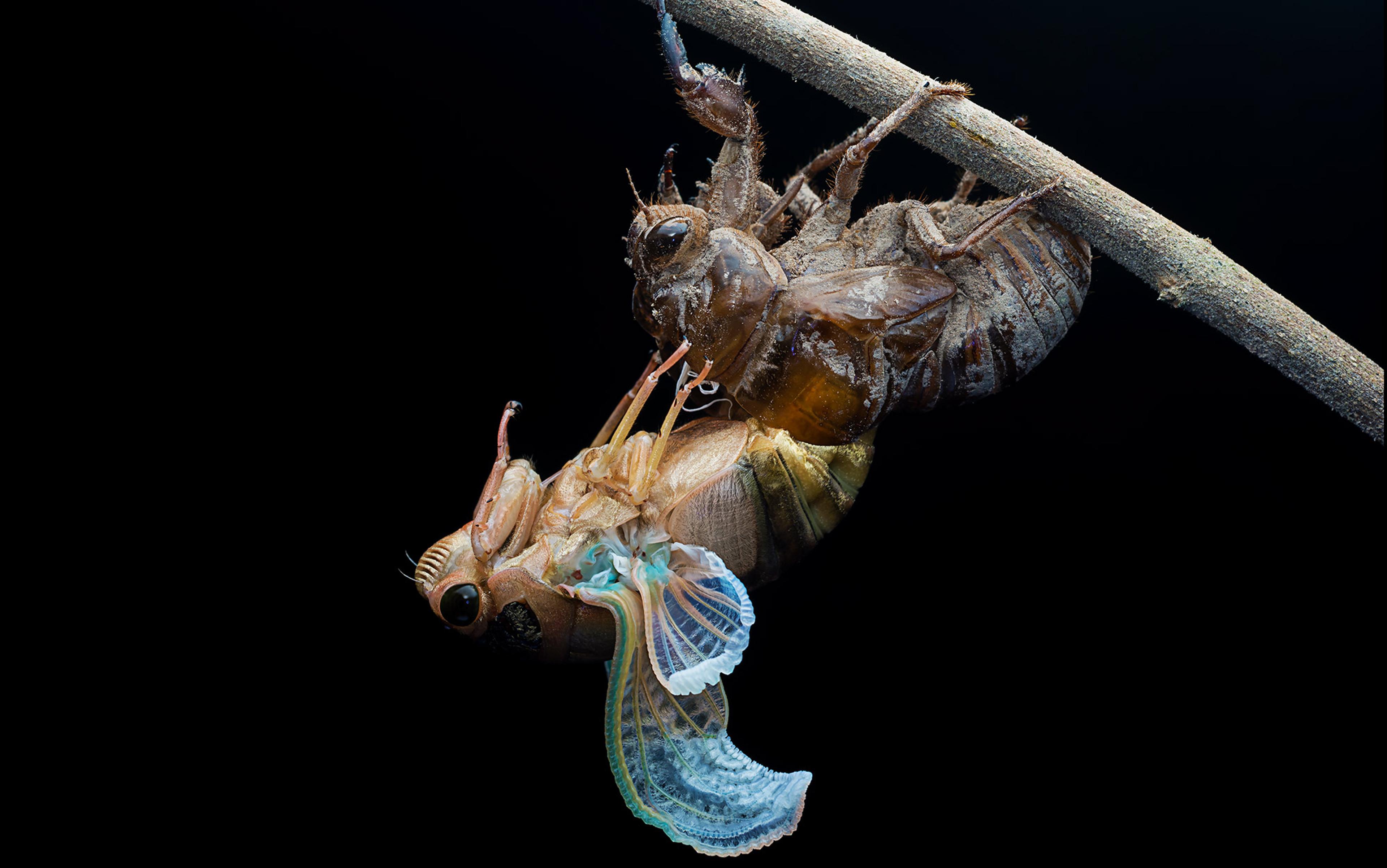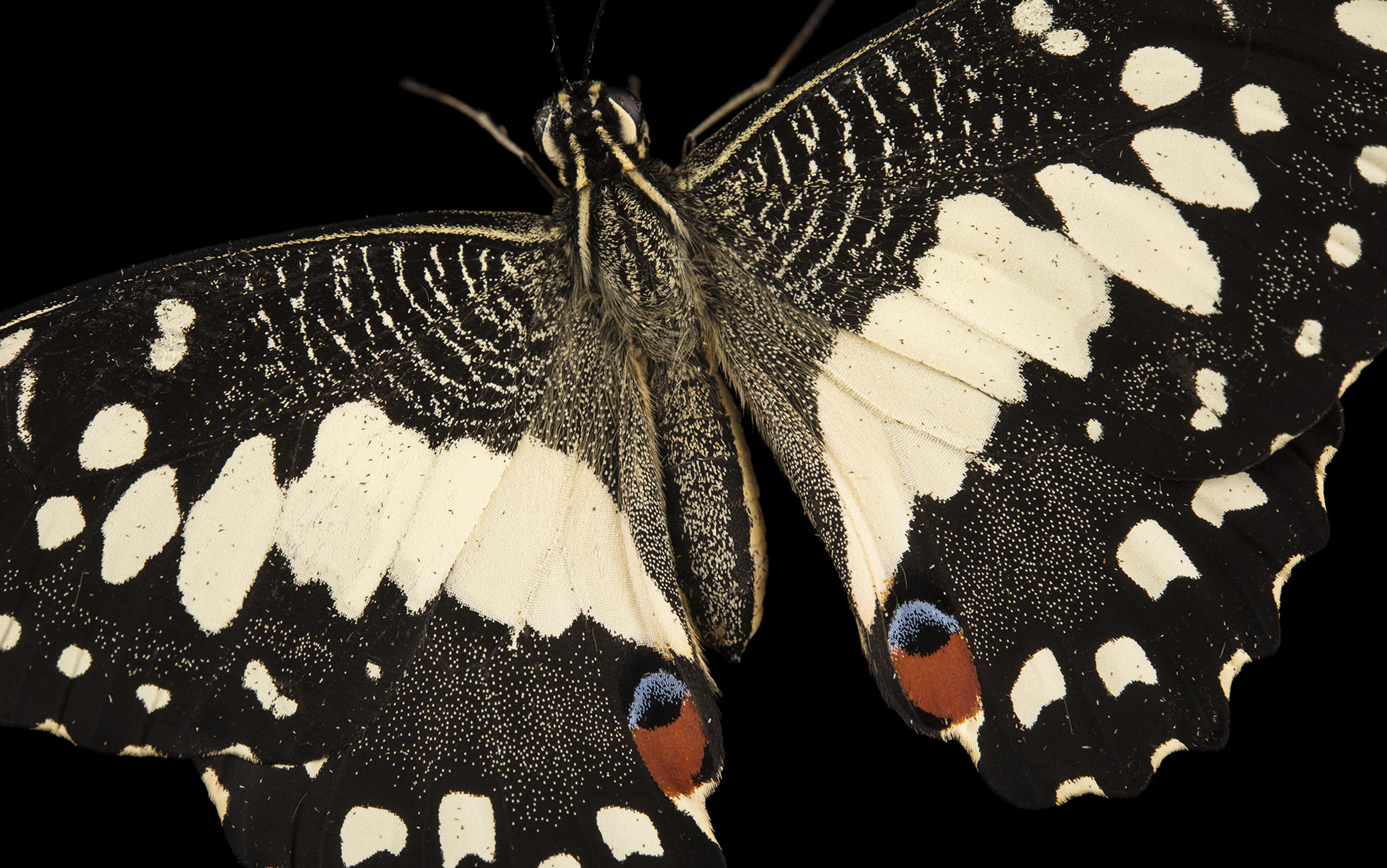If philosophy is a tree, metaphysics and epistemology are its two main branches. Epistemology asks how we can know about the world; metaphysics tries to figure out what the world is, at its most fundamental level. If our tree fell down in a forest and no one was around, the epistemologist would set about examining the quality of the evidence for what happened; meanwhile, the metaphysician would wonder if it made a sound.
Philosophers of science (like me) usually take the existence of things and events for granted. We do epistemology: we focus on knowledge, not the thing itself. We ask ourselves questions such as: why is science so successful at finding stuff out, if indeed it is? Is there a method that underlies this success? How do values shape scientific enquiry? Mainstream metaphysics keeps us in our place, generally saying that the scientific endeavour is just too narrow to address profound questions about existence, being and reality.
But I’d argue science is precisely where we should start to answer these questions – in particular, with the weirdness and complexity of biology and biochemistry. From the origins of cancer to the nature of personal identity, the life sciences do not merely provide us with ever-greater numbers of disconnected facts. They also offer us the best data for putting together a broader picture of what the world is really like, a picture that confounds many common assumptions about what things are and where they come from. When we first pull a fish out of the sea, we might wisely remain agnostic about how such an unusual entity got to be there. After thousands of fish of many different kinds, we are entitled to infer that there is a whole strange, living world down there under the waves. Similarly, since science aims to discover truths about the world, surely it should tell us something about the very deepest levels of our reality, which is to say, metaphysics.
This project of science-based metaphysics, sometimes referred to as ‘naturalistic metaphysics’, has been surprisingly controversial. The philosophers James Ladyman at the University of Bristol and Don Ross at the University of Cape Town offered a forceful defence in their book Every Thing Must Go (2007). As that book illustrates, the debate can be technical and vitriolic. Consequently, I won’t defend naturalistic metaphysics from its critics so much as show you how it helps us inch towards an answer to one of the oldest chestnuts in the history of philosophy: is reality made up of things that somehow change over time, or are things just temporary shapes that our perception plucks out from a flux of unruly, unfolding processes?
A good place to begin is with the question of essentialism. An ancient philosophical tradition dating back to Plato and Aristotle sought to discover essences, the defining properties of things – ‘the being of any thing, whereby it is, what it is’, as the philosopher John Locke put it in An Essay Concerning Human Understanding (1689). Locke doubted whether we would ever be able to discern such essences, lacking the necessary ‘microscopical eyes’ to discover them, although he did not doubt that they were real.
But is there really some inner nature that makes a frog a frog, and something else that makes a toad a toad, and an unbridgeable gulf in nature between the two? Or are these just words that make more or less pragmatic divisions among the denizens of the natural world, divisions that might equally well have been made in substantially different ways? For naturalistic metaphysicians, this is a question that must in the end be answered from empirical experience, or science.
We can make the stakes of essentialism more concrete by looking at the case of proteins. These are the worker-bees of the organic world, responsible for everything from ferrying signals between cells to kickstarting chemical reactions. They’re made up of long molecules known as amino acids, strung together in chains and folded into fiendishly complex shapes.
So just what is a protein? Scientists used to think that they could define each kind of protein by figuring out its sequence of amino acids, mapping the structure or form, and observing how the combination of these properties allowed the protein to serve its specific physiological function. Unfortunately, things aren’t quite that simple. A well-worn metaphor is that a protein (in the form of an enzyme) works like a ‘lock and key’, fitting just-so into whatever it’s acting on. Yet increasingly it looks as if the two actually accommodate one another, less a key in a lock than a negotiation on the fly. Moreover, various types of proteins can ‘moonlight’, doing different things in different situations. Their abilities often depend on their context. Phosphoglucose isomerase is best known for its role in the process that releases energy inside cells, for example – but when outside the cell, it can perform at least four distinct functions, such as promoting nerve growth. Worst of all for categorical purists was the discovery of ‘intrinsically disordered proteins’, shapeshifting macromolecules that rapidly switch from one form to another. Current estimates suggest that 40 per cent of eukaryotic proteins could behave this way, and 10 per cent of proteins overall.
Evolution tells us that, if we take a wide enough perspective, there are no sharp lines between species
How should we treat these data? If you’re into mainstream metaphysics, perhaps such experimental evidence doesn’t really matter; science is simply too limited, parochial and fallible to tell us anything truly fundamental about what something is or is not. But for a naturalistic metaphysician, these observations of constant biotic flux point to the need for an overhaul in how we see the world. Instead of searching for things with fixed essences based on form and function, naturalistic metaphysics suggests that we need to move to a picture that’s much more dynamic – in which any ‘thingness’ is strictly temporary.
But perhaps ‘things’ can be preserved when we go up a layer of complexity? Essentialists once hoped that genetics would offer up a master key to the differences between various organisms. However, actual genetic knowledge disappointed. The genes that vary most between species also tend to vary most within related species, so genes alone could not delimit individual organisms. Evolution tells us that, if we take a wide enough perspective, there are no sharp lines between species. For a mushroom and a butterfly, or a fern and an elephant, in principle we could trace a continuous series of ancestors back to some first common ancestor, providing a complete connecting sequence with no sharp boundaries within it. If there are no sharp boundaries, then there are certainly no essences that define such boundaries.
Sure, some ‘things’ look pretty distinct and durable. The periodic table offers a neat taxonomy of chemical elements, perhaps essentially distinguishable by their atomic numbers. I’m happy to concede that ‘thingness’ might be prevalent outside the life sciences, and I don’t claim to put this whole ancient quarrel to bed (although I can’t help noting that contemporary physics looks to me much more process-like than thing-like). The only point I’d insist upon is that the best way to answer these profound questions is by putting the empirical science front and centre – rather than relying on free-floating philosophical abstractions. In the living world, at least, a metaphysics of ‘things’ is hard to sustain. Where once we had discrete and distinct ‘proteins’ and ‘organisms’, all we are left with are highly dynamic processes.
To round out how biology pushes us to adopt a process perspective on reality, let’s ponder the foundation of the opposite view: the meaning of a thing. In the Western philosophical tradition, a thing has at least two key features. First, it’s self-sufficient. Its existence depends only on its internal properties. Secondly, the default status of a thing is stasis. What requires explanation is when a thing changes, not when it stays the same.
Life conforms to neither of these conditions. Take self-reliance. Living systems exist far from the state known as thermodynamic equilibrium – instead of their energy spreading itself out over the widest possible space, it’s concentrated in specific areas and flows along defined pathways, such as the cardiovascular or nervous system. Such phenomena are very improbable, as far as fundamental physics is concerned. Maintaining this unusual arrangement requires constant activity, or metabolism, which in turn demands that organisms extract energy from their environment via eating, breathing, photosynthesis, and so on. That belies any pretensions of independence.
Organisms don’t just draw on their environment, but they also rely on one another via symbiosis. Beyond familiar examples such as lichens and corals, almost all animals and plants depend for their existence on myriad microbes that live alongside them. Our own gut is populated by trillions of these microbial cells, as are our skin and various other crannies and cavities. We used to consider these microscopic fellow-travellers no more than opportunistic residents of a conveniently warm and protected niche, but it’s becoming increasingly clear that our gut bacteria are vital for digestion, the immune system, and even for development. There is growing evidence that they have a direct impact on the brain and nervous system too. These findings make it hard to claim that a creature is self-sufficient, or even that you can mark out where it ends and another one begins. This is all highly problematic if we’re wedded to thingness, but pretty much what we’d expect in a world of intertwined and interdependent processes.
The remarkable thing isn’t how much things change, but how they achieve stability for any length of time
The criterion of stasis is equally shaky. As we saw with thermodynamic disequilibrium, stasis simply isn’t an option for living systems. Stillness means death. Moreover, all organisms – and cells and organs – have life cycles, and can have very different properties at different stages. A golden-haired boy becomes a grey-haired old man; a larva hatches from an egg and becomes a pupa, imago and finally an insect. If we are committed to thingness, it becomes a real quandary as to how something can undergo such profound changes to its fundamental properties without ceasing to exist. A process, on the other hand, does not persist by some central something remaining the same, but rather by the causal connections between the activities that continue to sustain the process. For example, at every stage of the life cycle of the insect, a flurry of metabolic processes allows it to maintain its current form. Another set of processes manages its transition from larva to pupa, and pupa to adult.
How should we carve up the natural world, then? Looked at with a process-eye-view, biological entities (heart cells, hearts, humans) are just temporary eddies in a dynamic flux of biological activity. Picking out these patterns or the categories they exemplify becomes a pragmatic question of what matters to you – of the whirlpool you want to swim in, depending on what you’re trying to achieve.
For instance, about 50 oak tree species are typically distinguished in the eastern United States. For someone interested in forestry, timber production or choosing a tree for the garden, these categories are indispensable. However, the oaks also fall into two larger groups, the red oaks and the white oaks, with many or even all of the species within each group capable of fertilising with one another. So if you think of a species as a group of interbreeding individuals, you might argue that there were really far fewer species, perhaps only two. (Such groups of reproductively linked species are sometimes referred to as ‘syngameons’.) On the other hand, an expert taxonomist might want to distinguish not only the 50 generally recognised species, but a number of well-known and not so well-known hybrids.
The beauty of process metaphysics is that you can acknowledge this sort of flexibility and indeterminacy but maintain as much analytical sharpness as reality allows. The really remarkable thing about the world isn’t how much things change, but how they achieve stability for any length of time. Explaining the extraordinary (if transient) existence of eddies over time is a pretty good description for much of biology – and, indeed, medicine.
If science can lend a hand with metaphysics, can naturalistic metaphysics be a boost for science? Some scientists are suspicious of philosophers encroaching on their turf, but others are more welcoming. And whether they like it or not, even the most hard-nosed empiricist needs a metaphysical framework. Like John Maynard Keynes, who said in 1936 that practical men were invariably enslaved to a defunct economist, the theoretical biologist and philosopher J H Woodger wrote in 1967 that ‘physiologists in general never trouble themselves about such things because they suppose themselves to be above “metaphysics” when in fact they are only a very little above it – being up to the neck in it’.
‘Thingness’ has a very real impact on scientific work by motivating the search for mechanisms. A mechanism is a precisely arranged set of stable things whose interactions generate a phenomenon of interest. Scientists often see uncovering mechanisms as the gold standard of scientific insight. This approach certainly has its benefits: not everything can be examined at the same time, and science depends on careful attention to well-defined parts of the whole.
However, mechanistic explanations can be successful only under certain conditions. First, the constituent bits must be stable over the relevant timescales. So, for instance, most enzymes will be more or less fixed over the course of the cellular process they’re involved with. But enzymes have life cycles too, stretching from their creation to their decay, or proteolysis – which is itself catalysed by further proteins.
Second, a mechanistic explanation can apply only within a specific context. It’s easy to miss this proviso in practice, because labs are designed with the aim of being able to screen out distorting factors, such as non-relevant chemicals or changing temperatures. If a consistent result is not obtained, researchers can control more esoteric factors such as time of day or ambient noise levels. The objective, at any rate, is to provide an environment stabilised in whatever ways necessary to produce a consistent outcome.
Rather than a dysfunction that requires a specific description, perhaps cancer is actually the expected state
In nature, though, nothing is ever independent of what’s going on around it. The constancy of a heartbeat depends on the proper behaviour of its component tissues and molecules, but also on the wider organism that provides it with oxygen and relevant nutrients, not to mention exercise. If a living system ever manages to provide a constant result, it does so by reacting appropriately to an ever-changing scene.
Process-thinking has profound implications for medicine, because it shifts the burden of scientific explanation away from the interaction of things based on essences, and towards how unruly processes somehow manage to crystallise into identifiable patterns. Take cancer: when we see the human patient as a mechanism, as scientists generally do, we’re inclined to look for the causes of disease in ‘damaged’ internal parts, often genes. But note how the focus shifts if we think about change as the norm, and stability as the phenomenon that needs explaining. The persistence of the human organism over the lifecycle requires an almost inconceivably precise balance of division, differentiation and destruction of cells (apoptosis). The conditions called ‘cancer’ involve various failures of this balance, an uncontrolled proliferation of cells of a certain type or types. Rather than a dysfunction that requires a specific explanation, perhaps cancer is actually the expected state – and what we need to understand is how self-regulation explains our remarkable tendency not to suffer from cancer. (Indeed, it seems that messed-up genes are as much an effect as a cause of cancer.)
You can do a similar switch with microbial disease. We’ve come a long way in appreciating the function of our microbiome, but scientists have been a little too eager to suggest a division between good, bad, and neutral microbes. The task of medicine looks easy from this point of view – it’s just about recognising and destroying the bad bacteria. However, while some bugs really are just bad, whether microorganisms are good or bad for you is often a matter of context. Bacteria that are beneficial in the gut can get very nasty indeed if they invade other parts of your body. Microbes don’t generally work alone. In your gut, there are thousands of different strains, and these often serve interconnected functions. Consequently, what a particular strain does, and whether it is beneficial for the host that it does it to, will depend on the overall composition of the microbial community. Moreover, while the word ‘microbe’ tends to apply to bacteria, there’s a growing awareness that we might need to include viruses in our survey of health-giving microscopic entities. Many viruses appear to be beneficial, perhaps essential, for human life – such as phages that regulate bacterial populations.
These examples show that probing metaphysics with biology, and vice-versa, makes a crucial difference to how we think about scientific and philosophical questions. But to choose to adopt a naturalistic metaphysics is, by definition, ultimately to ground one’s picture of the world in our best science. The naturalistic metaphysician has become a snake eating its own tail. So how can we get to grips with the relationship between these two domains?
I suggest two possible answers. One is that the relation between science and metaphysics is dialectical. Neither come first, but both help to shape the other. Given my enthusiasm for process, this shouldn’t be surprising – dialectics is relevant to understanding all sorts of processes, such as the relations between elements at different levels of a hierarchy of biological organisation. The molecules in the cell are vital for explaining overall cellular behaviour, but at the same time the nature of those parts can’t properly be understood without analysing the ways in which they’re shaped by the overall nature of the cell itself.
My second answer might be a bit more digestible. Metaphysics is much more general than the specifics of scientific research. Successful contemporary science requires a depth of focus on very specific problems. Inevitably, you pay for this focus with a narrowness of vision. Naturalistic metaphysics, however, aims to provide a much wider perspective, by reconciling insights from across the wide terrain of different, narrow specialisations. It can be seen as an effort to provide a coherent picture of scientific understanding, or at least a substantial part of science – to understand the whole ecosystem under the sea, not just the physiology of a single fish. This general picture might or might not concur with what any one area of science assumes. But metaphysics will still have concrete implications for the practice of science itself, and could even provide deep criticisms of bits of science that conflict with the wider picture.
There’s room for both epistemologists and metaphysicians under the tree of knowledge. But when it comes to the living world, both kinds of philosopher could do with making room in the shade for the humble scientist. Learning from this third colleague, we see that biology is not fashioned from bits of Lego, carefully sculpted to play a precise part in exactly one bit of machinery. Rather, living things are processes that are capable of assuming many protean forms: dynamic, ever-changing, but balancing, for a time, on just the right side of chaos.






